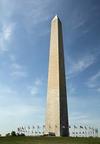Temple Flashcards
(184 cards)
An edifice or place dedicated to the worship or presence of a deity.
Temple
Of or pertaining to religious objects, rites, or practices as opposed to the secular or profane.
Sacred
Of or pertaining to the temporal or worldly rather than the sacred or spiritual.
Profane, Secular
A temple-tower in Sumerian and Assyrian architecture, built in diminishing stages of mud brick with buttressed walls faced with burnt brick, culminating in a summit shrine or temple reached by a series of ramps; though to be of Sumerian origin, dating from the end of the 3rd millennium BCE.
Ziggurat, Zikkurat

A temple-tower presume to be the great ziggurat at Babylon, which no longer survives, though it was seen and described by the Greek historian Herodotus in the 5th century BCE.
And they said to one another, Let us make brick, and burn it thoroughly. And they had brick for stone, and bitumen for mortar. And they said, Let us build a city and a tower, whose top may reach unto heaven and let us make a name, lest we be scattered abroad upon face of the whole earth” Genesis 11:4
Tower of Babel

The monumental stone sculptures of human-headed, winged bulls or lions that guarded the entrances to Mesopotamian palaces and temples.
Lamassu

A prehistoric monument consisting of an upright megalith, usually standing alone but sometimes aligned with others.
Menhir

A very large stone used as found or roughly dressed, esp in ancient construction work.
Megalith

A single block of stone of considerable size, often in the form of an obelisk or column.
Monolith

A heap of stones piled up as a monument, tombstone, or landmark.
Cairn, Carn

A prehistoric monument consisting of two or more large upright stones supporting a horizontal stone slab, found esp. in Britain and France and usually regarded as Tomb.
Dolmen

A megalithic tomb of the Neolithic and early Bronze Ages found in the British Isles and Europe, consisting of a roofed burial chamber and narrow entrance passage, covered by a tumulus; believed to have been used for successive family or clan burials spanning a number of generations.
Chamber Grave, Passage Grave

An artificial mound of earth or stone, esp over an ancient grave.
Tumulus, Barrow

Two upright megaliths supporting a horizontal stone.
Trilithon, Trilith

A circular arrangement of megaliths enclosing a dolmen or burial mound.
Cromlech

A circular arrangement of vertically oriented wooden posts or stones.
Henge

A megalithic monument erected in the early Bronze Age, c. 2700 BCE, on Salisbury Plain, Wiltshire, England, consisting of four concentric rings of trilithons and menhirs centered around an altar stone: believed to have been used by a sun cult or for astronomical observations.
Stonehenge

A long, deep passageway into an ancient subterranean tomb.
Dromos

A stone-built subterranean tomb of the Mycenaean civilization consisting of a circular chamber covered by a corbeled dome and centered by a walled passage through a hillside.
Beehive Tomb, Tholos

A tome of the Aegean civilizations consisting of a deep rectangular cut into sloping rock and a roof of timber or stone.
Shaft Grave

An ancient Egyptian tomb made of mud brick, rectangular in plan with a flat roof and sloping sides, from which a shaft leads to underground.
Mastaba

A small chamber inside a mastaba containing a statue of the deceased.
Serdab

The figure of the sacred asp, depicted on the headdress of ancient Egyptian rulers and deities as an emblem of supreme power.
Uraeus

A massive masonry structure having a rectangular base and four smooth, steeply sloping sides facing the cardinal points and meeting at an apex, used in ancient Egypt as a tomb to contain the burial chamber and the mummy of the pharaoh. The pyramid was usually part of a complex of buildings within a walled enclosure, including mastabas for members of the royal family, an offering chapel and a mortuary temple. A raised causeway led from the enclosure down to a valley temple on the Nile, where purification rites and mummification were performed.
Pyramid


















































































































































